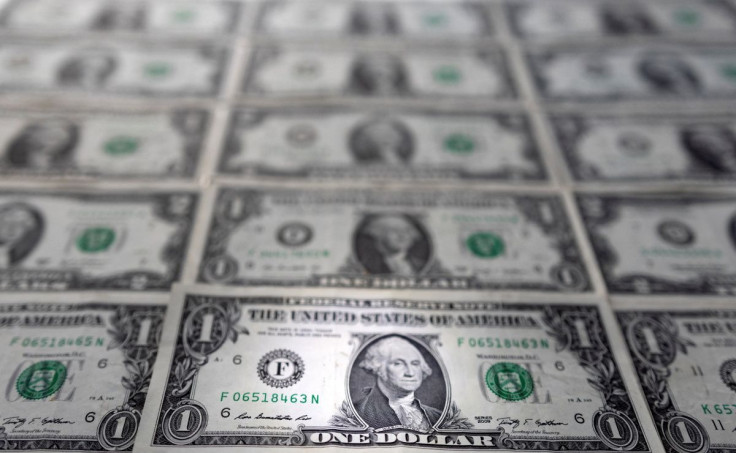Dollar Starts Week Strong, Poor Chinese Data Hurts Aussie

The dollar started the week just off a 20-year high against its peers on Monday, as investors sought safety due to fears about global growth that were highlighted by Monday's poor Chinese economic data, sending the Aussie dollar lower.
The dollar index was at 104.57, having briefly crossed the 105 level on Friday, its highest since December 2002, after six successive weeks of gains.
"Persistent geopolitical tensions, ongoing global supply disruptions, a slowing Chinese economy and a hawkish Fed suggest that the USD should be stronger for longer," said HSBC global FX research in a note refreshing their currency forecasts.
They expect the euro to fall to parity against the dollar in the coming year. "Much weaker growth and much higher inflation leave the ECB facing one of the toughest policy challenges in G10 (central banks)," they said.
The single currency was at $1.0395 on Monday morning, slightly lower, and only just above the $1.0354 level it hit on Thursday, its lowest since early 2017.
Moves were sharper in the Australian dollar, which fell 0.68%, hurt by weaker-than-expeted Chinese data for April, when COVID-19 lockdowns took a heavy toll on consumption, industrial production and employment, adding to fears of a sharp slowdown in the second quarter.
"I think people want to see more being done to stabilise the Chinese economy, so that's something to keep a lookout for," said Sim Moh Siong currency strategist at Bank of Singapore.
He said investors were also watching for any more guidance from the Federal Reserve about the interest rate path, and the Russian-Ukraine war given the risks it poses to European growth.
Markets are pricing in 50 basis point hikes at the Fed's next two meetings, according to CME's Fedwatch tool, but with the possibility of larger increases.
"There's not much more guidance the Fed can give in light of the uncertainty on the inflation front, but they seem prepared to put out soothing words to rule out a 75 basis point rate hike," said Sim.
Sterling, which has suffered along with the euro, was at $1.2244 on Monday, having dropped as low as $1.2156 last week, hurt by softer-than-expected first quarter GDP figures.
In the coming week, Britain has labour market data, inflation and consumer confidence data.
The Japanese yen was a little firmer at 129 yen per dollar. Last week it recovered from as low as 131.35, and managed its first week of gains since early March.
With yields pinned down in Japan, the yen is vulnerable to higher U.S. yields, but global growth fears have caused U.S. Treasury yields to pause their march higher.
Crypto markets, which trade around the clock, had a quiet weekend after turmoil last week driven by TerraUSD, a so-called stablecoin, broke its dollar peg.
Bitcoin was trading around $30,300 down 3% having dropped to $25,400 on Thursday, its lowest since December 2020.
(Editing by Sam Holmes and Jacqueline Wong)
© Copyright Thomson Reuters 2024. All rights reserved.




















